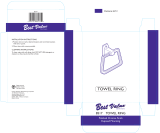
14
Cisco Connected Grid Modules for CGR 1000 Series—WiMAX Installation and Configuration Guide
OL-26236-03
Software Overview
For more on the WiMAX technology, see the following:
http://www.cisco.com/web/about/ac123/ac147/archived_issues/ipj_11-2/112_wimax.html
WiMAX Link QoS
QoS is configured on the base station. The IEEE standard 802.16e provides the ability to define Quality
of Service (QoS) for different data streams. It contains definitions of available parameters and
scheduling types. The responsibility of QoS is split between the base station and the mobile stations. The
base station scheduler is in control of managing the overall QoS of the system. However, the mobile
station uplink scheduler is responsible for QoS management between service flows allocated to that MS.
The base-station scheduler is entirely responsible for the downlink scheduling.
The WIMAX protocol follows the Request for Connection; Grant for Terminal model. In this model, the
mobile station issues bandwidth requests that indicate the pending demand for each connection. The base
station scheduler, using this information, generates an uplink grant (a grant is the time and frequency
allocation for uplink transmission). The mobile station uplink scheduler uses this grant to allocate access
to the uplink for its service flows based on its local knowledge of service flow priorities. The mobile
station uplink scheduler can be configured for different behavior.
WiMAX connections are defined by service flows. Each service flow is described in terms of QoS
parameters and policy of allocations. Service flows contain classification rules which assign packets to
specified connection.
QoS Support
In the Mobile WiMAX MAC layer, QoS is provided through service flows. This is a unidirectional flow
of packets that is provided with a particular set of QoS parameters. Before providing a certain type of
data service, the base station and user-terminal first establish a unidirectional logical link between the
peer MACs called connection. The outbound MAC then associates packets traversing the MAC interface
into a service flow to be delivered over the connection. The QoS parameters associated with the service
flow define the transmission ordering and scheduling on the air interface.
The connection-oriented QoS therefore, can provide accurate control over the air interface. Since the air
interface is usually the bottleneck, the connection-oriented QoS can effectively enable the end-to-end
QoS control. The service flow parameters can be dynamically managed through MAC messages to
accommodate the dynamic service demand. The service flow based QoS mechanism applies to both DL
and UL to provide improved QoS in both directions. Mobile WiMAX supports a wide range of data
services and applications with varied QoS requirements.
QoS Output
The following is sample QoS configuration on a base station:
Router(config-if)# show interface wimax 4/1 service-flows brief
sfid cid bcid type state direction rules arq harq
-----------------------------------------------------------------------------
0 3 3 basic active Bidirectional 0 NO NO
0 515 3 primary active Bidirectional 0 NO NO
4294959123 1034 3 data active Downlink 0 NO NO
8007 1045 3 data active Downlink 1 NO YES
8008 1028 3 data active Uplink 1 NO YES
8091 1026 3 data active Downlink 1 NO YES
8092 1040 3 data active Uplink 1 NO YES






















